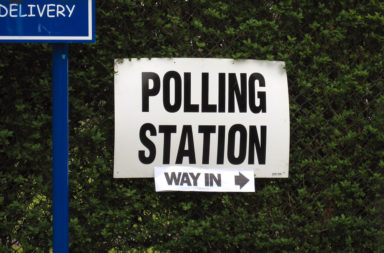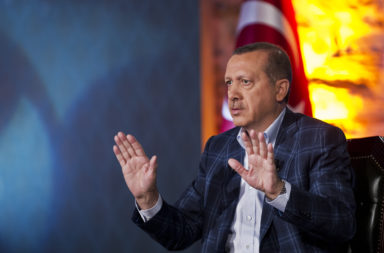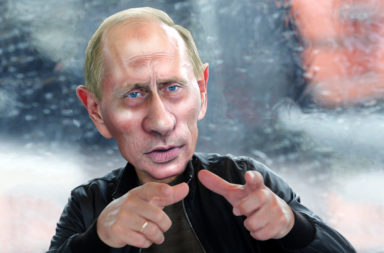John Kerry made clear that the deal only amounted to a “pause” in the hostilities, and that a full ceasefire would require more work to be done.
Peace talks are scheduled to resume between the various parties involved in the conflict before February 25, after an initial attempt at negotiations failed earlier this year. With Russia’s involvement in the fight over Aleppo, the Syrian regime had lost interest in continuing the talks.
The only substantial achievement that was made now, was the agreement by both Russia and the West to “accelerate and expand” deliveries of humanitarian aid. While obviously important and commendable, this deal still leaves plenty of room for improvement.
Here is what was agreed specifically by the The 17-member International Syria Support Group (ISSG):
- The plan aims for a “cessation of hostilities” within one weeks time.
- The pause will not apply to the Islamic State (IS) and al-Nusra Front. the battle against ISIS will continue.
- The “pause” comes after Russia has been stepping up its air campaign against the Syrian opposition forces. Western powers have accused Russia of using the fight against as a cloak for its true goal of propping up the regime in Damascus. It is clear that not all parties share an interest in bringing the violence to a quick end.
- German Foreign Minister Frank-Walter Steinmeier spoke of a “significant reduction in violence”.
- There have been diplomats quoted as saying that the contract isn’t “worth the paper it’s printed on”. The coming week will show the true level of commitment on all sides.
- The contentious question of Mr Assad’s future has been shelved for the time being
It will take immense political will and resolve to move ahead and try for a comprehensive ceasefire for a civil strive where so many outside forces are involved. In Syria, Russia, Iran, and Hezbollah are supporting up the Assad government, while regional powers Turkey, Saudi Arabia and Qatar back the rebel forces with the support of American and European air power. The West’s fight is mainly concentrated on fighting ISIS, while the Russian air campaign predominately target’s direct threats to Mr Assad.
In order contain ISIS and bring Peace to Syria and Iraq Globalo has proposed a Grand Dual Strategy to end the conflict that has seen 250,000 people killed and 13.5 million displaced since its start in the spring of 2011.
The 12 General Elements of a Grand Dual- Strategy
- Our strategic approach should be creative. Until now we have lacked creativity and smart ideas. We should follow the advice of Albert Einstein, genius of the 20th century: “Imagination is more important than knowledge”, and: “You cannot solve problems at the same level of thinking, where you created them.”
- The hawk cannot bring peace alone. We have to talk less, and act more. Timing and actions on the ground are of essence.
- We must collect, analyze, and use the best practices from the conflicts in Iraq or Afghanistan, and other areas. Learn from all successful anti-terror-activities, military and diplomatic operations: We have to make use of a complex toolkit of strategic intelligence.
- We have to focus on what local citizens want, and get away from a Western-centric, Potomac-view in foreign affairs.
- We have to start and fund a reconciliation process from day one, using best practices from all over the world.
- We must focus locally and regionally in Iraq and Syria, and not fixate on the capitals or rulers of the day. The naive desire to centralize power in the capital has led to instability and the rise of ISIS in Iraq.
- All actors on the ground should be included from the beginning. We must talk to everyone and avoid taboos.
- Our main enemy is less those we fight, but our own slow bureaucratic process in the Western capital cities. We usually come too late, when it is very hard to win and the price is at its highest. For each conflict we need a detailed action plan of 500 pages and all options and costs outlined. Pure crisis management is not enough. The American hope that some kind of elections will solve all, is naive after what has happened in Iraq since 2003.
- We have to design a dual-strategy of power and reconciliation. It must contain many hard and soft factors of peacemaking, military and diplomacy. Only with this intellectual approach did the West win the Cold War with the “Harmel Report“ 1967, combining sufficient deterrence and detente in NATO. Or NATO’s Two Track Decision in 1979 with the deployment of Pershing II and Cruise Missiles as a balance to the Russian SS-20 threat. Including the zero option, agreed in the IMF Treaty 1987. Until now we have no such clever approach for ISIS, Syria or Iraq.
- We need optimism as a self-fulfilling prophecy. The fall of the Berlin Wall, the dismantling of all medium-range nuclear missiles in Europe, the membership of Eastern European states in the EU and NATO show that the impossible is possible. Pessimistic views just serve to paralyze us.
- We cannot wait for a global consensus. We need to start today with short term actions, implement medium-term activities and follow a long-term planning. We should not wait nor focus on international conferences, but act now.
- We need sufficient funding. Until now we do not use our capitalistic money-power as needed. This seems absurd in confrontation with the richest terror organization ever with an annual income of close to USD one billion per year. USD 50 billion should be collected now, pooled and channeled towards 20 actions and the support of the millions of refugees. Let us start today. Until now the Western strategy has been financially impotent. Even the UN does not have enough cash to support the refugees. The necessary resources should be collected from the United States (10 bn), the European countries (10bn), but must also come from Japan (5bn), South Korea (5bn), Russia (2bn) the Gulf states (13bn) or China (5bn).
Action Plan with 21 Hard and Soft Factors
- Seal the border between NATO-partner Turkey, and Syria. This border has been used for smuggling ISIS fighters, weapons, money, and oil. Here the US-Mexican border control could serve as a model on how to progress this plan. We must use the know-how of the Kurdish region in Iraq as the best practice.
- Fund the two million Syrian refugees now in Turkey with everything needed. The same must apply for the two million refugees in Jordan and Lebanon. This will cost approximately six billion dollars.
- Start a one billion dollar Local Reconciliation and Development Fund for local projects in free Iraqi and Syrian villages that have been destroyed by ISIS. Kobane and Sinjad for example.
- Declare and secure several no-fly-zones in Iraq and Syria to give the people a chance to live in peace in this region.
- Negotiate a cease-fire between all non-ISIS and non-Al Nusra rebels, and the Assad-government. This should be moderated by Russia and France. It may also include a cease-fire arrangement along the Turkish-Syrian border.
- Invite the free Syrians for a Constitutional Assembly in Paris to discuss and agree on a democratic and forward looking constitution with a federal structure.
- Establish a new Syria Development Agency , recruited by the more than four million refugees out of the country, who have nothing to do in the camps, to rebuild their homes. Trained by Western experts now. Form a new Syrian Liberation Army as well out of this pool to free the villages from ISIS. Two to three billion dollar budget needed.
- Include Assad’s wife, but not himself in the reconciliation process after the cease-fire.
- Start massive cyber-attacks on ISIS and block all Twitter, Facebook, Skype-accounts.
- Name all hidden supporters of ISIS in Saudi Arabia, the Gulf, and Turkey via media-leaks. Focus more intelligence on these channels, and black-list all ISIS supporters for entrance into Europe or the United States.
- Change national laws so that all supporters and members of ISIS can be prosecuted and start re-education programs.
- Forcefully go after the oil-dealers and weapon traders, in Turkey and other states.
- Set up a Syrian International Justice Center for warcrimes in Syria. This could be placed in Nuremberg, Germany with 100 prosecutors and an attached documentation center.
- Collect all data about and communication between radicals in an ISIS Data Center.
- Start a “We are Islam – not IS“ campaign to tell the truth about the peaceful Holy Qur’an, funded with at least an one billion dollar investment (see “We are Islam not IS“ on Facebook). Add a counter-ISIS initiative in all social media to discredit Abu Bakr al-Baghdadi and his team as un-Islamic, and offenders of the Holy Qur’an.
- Airstrikes must increase, and occur day and night on ISIS. This must reach the level of the successful air campaign in Iraq. During 1991, Operation Desert Storm saw 6,613 bombs dropped each day. As of July 2015 only 43 bombs hit ISIS a day. The U.S. conducted the same amount of airstrikes in two months in Afghanistan in 2001 as it has now undertaken in 16 months in Iraq and Syria. The West should increase the pace and weight of its attacks significantly.
- Station between 5,000 to 10,000 special forces of the United States, France, and other countries in the old airport of Erbil in Kurdistan-Iraq. These should be used on a case-by-case basis in a new guerrilla warfare, designed to support the Kurdish troops.
- Deliver all weapons necessary to Kurdistan-Iraq without the bottleneck of Bagdad. Stop the attacks of NATO-partner Turkey on the PKK, and re-start the reconciliation process.
- Finance and equip a doubling of the Peshmerga forces from 100,000 to 200,000, as they are the best ground forces to fight ISIS.
- Use special forces on the ground to support the locals in their fight. Employ heavy military force to crack important support lines and cities, using a hit-and-run-strategy of joint Kurdish-American operations or American-Iraqi units.
- Continue the important Vienna-process, including the Russian Federation and Iran, to focus attacks on ISIS. Further integrate the Sunni opposition forces in the Bagdad government and enhance local autonomy for the Sunni tribes in Iraq and Syria.





